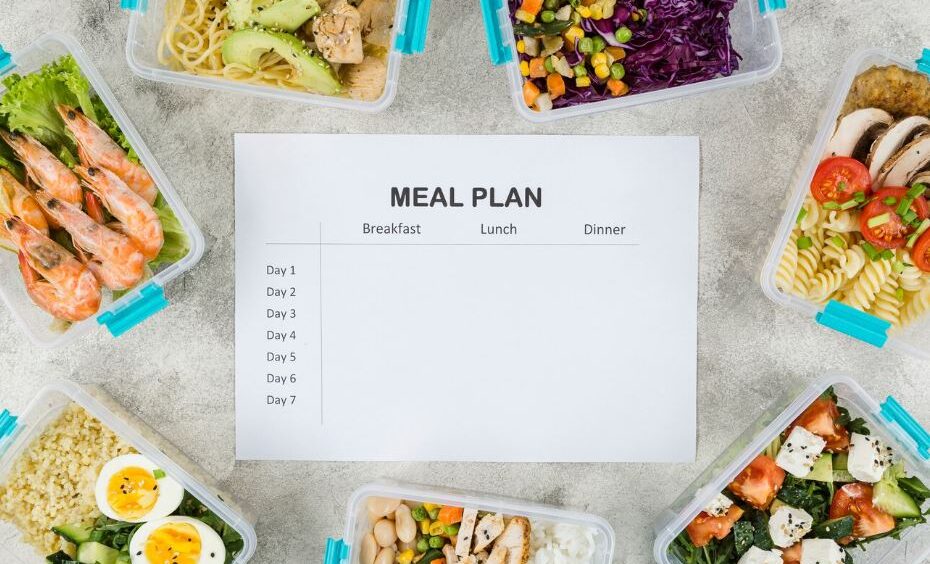The Ultimate Guide to Creating a Sustainable Meal Plan for Weight Loss

In the journey towards achieving weight loss goals, one of the most powerful tools at your disposal is a well-designed meal plan. However, creating a sustainable meal plan for weight loss requires careful consideration of various factors, including nutritional balance, portion control, and long-term adherence. In this comprehensive guide, we’ll explore the essential steps to crafting a sustainable meal plan that supports your weight loss efforts, without the need for meal plan delivery services.
Understanding Weight Loss Meal Plans:
Before delving into the specifics of meal planning, it’s important to understand the principles behind weight loss meal plans. At its core, a weight loss meal plan is designed to create a calorie deficit, where you consume fewer calories than your body expends, resulting in weight loss over time. However, the key to sustainable weight loss lies not just in calorie restriction but also in ensuring that your meals are nutritionally balanced, satisfying, and enjoyable.
- Set Realistic Goals: The first step in creating a sustainable meal plan for weight loss is setting realistic and achievable goals. Rather than focusing solely on a target weight, consider setting smaller, incremental goals that are measurable and attainable. This could involve aiming to lose a certain number of pounds per week or adopting healthier eating habits such as increasing vegetable intake or reducing sugar consumption.
- Calculate Your Calorie Needs: To create a calorie deficit, you need to determine your daily calorie needs based on factors such as age, gender, weight, height, and activity level. There are many online calculators and tools available to help you estimate your calorie requirements accurately. Once you have this information, you can adjust your calorie intake accordingly to support your weight loss goals.
- Prioritize Nutrient-Dense Foods: When planning your meals, focus on incorporating nutrient-dense foods that provide essential vitamins, minerals, and antioxidants while keeping calorie intake in check. Aim to include a variety of fruits, vegetables, whole grains, lean proteins, and healthy fats in your meal plan to ensure you’re meeting your nutritional needs.
- Plan Balanced Meals: Each meal should ideally contain a balance of macronutrients – carbohydrates, protein, and fat – to keep you feeling satisfied and energized throughout the day. Opt for complex carbohydrates like whole grains, lean proteins such as chicken, fish, or tofu, and healthy fats like avocado, nuts, and olive oil. Be mindful of portion sizes to avoid overeating and sabotaging your weight loss efforts.
- Incorporate Flexibility: While structure is essential for sticking to a meal plan, it’s also important to allow for flexibility and variety to prevent boredom and burnout. Experiment with different recipes, cuisines, and ingredients to keep your meals interesting and enjoyable. Consider setting aside one or two days a week for “flexible eating” where you can indulge in your favorite treats in moderation while still staying within your overall calorie goals.
- Plan Ahead and Prep: To set yourself up for success, take the time to plan your meals for the week ahead and prepare as much as possible in advance. This could involve batch cooking staples like grains, proteins, and vegetables, portioning out snacks, and assembling grab-and-go meals for busy days. Having healthy options readily available makes it easier to stick to your meal plan and avoid impulsive, unhealthy choices.
- Stay Hydrated: Don’t forget the importance of staying hydrated throughout the day, as dehydration can sometimes be mistaken for hunger. Aim to drink plenty of water, herbal teas, and other hydrating beverages to support your weight loss goals and overall well-being.
Implementing Your Meal Plan:
With your sustainable meal plan in hand, it’s time to put it into action. Remember that consistency is key, so strive to follow your meal plan as closely as possible while allowing for occasional indulgences and adjustments as needed. Keep track of your progress, both in terms of weight loss and how you feel physically and mentally, and make any necessary tweaks to your meal plan along the way.
Meal Plan Delivery and Weight Loss:
While Meal Plan Delivery services can be a convenient option for some individuals, they’re not a requirement for successful weight loss. By following the steps outlined in this guide, you can create a sustainable meal plan tailored to your preferences, budget, and lifestyle, without relying on external services or products.
In conclusion, creating a sustainable meal plan for weight loss is a highly personalized process that requires careful planning, attention to nutritional balance, and a commitment to long-term lifestyle changes. By setting realistic goals, prioritizing nutrient-dense foods, and incorporating flexibility and variety into your meal plan, you can achieve your weight loss goals in a way that’s enjoyable, sustainable, and ultimately rewarding.


 English
English 
